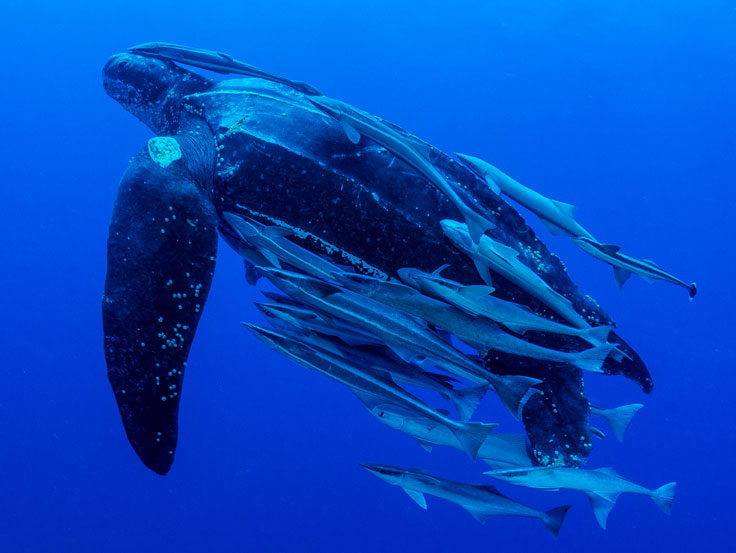Many animals eat sea jellies, including sea turtles, some fish and even penguins. Some animals, such as the giant Leatherback turtle (the world’s largest sea turtle) and the enormous Sunfish (Mola mola) exclusively eat sea jellies. The tiny polyps of sea jellies are also eaten by animals such as sea slugs.
Sea slugs have a unique way of dealing with the stinging cells of the jellies. For a reason we don’t yet understand, the stinging cells of the jelly are not triggered when they are ingested by the sea slug. The sea slug then incorporates the intact stinging cells into its own body. When another animal attacks the sea slug, the stinging cells fire, helping to defend to sea slug from its attacker. Most sea slugs eat the polyp stage of the life cycle but one unusual sea slug, Glaucus, lives at the sea’s surface and eats Bluebottles. You often find Glaucus washed ashore along with Bluebottles.
 The leatherback turtle
The leatherback turtle